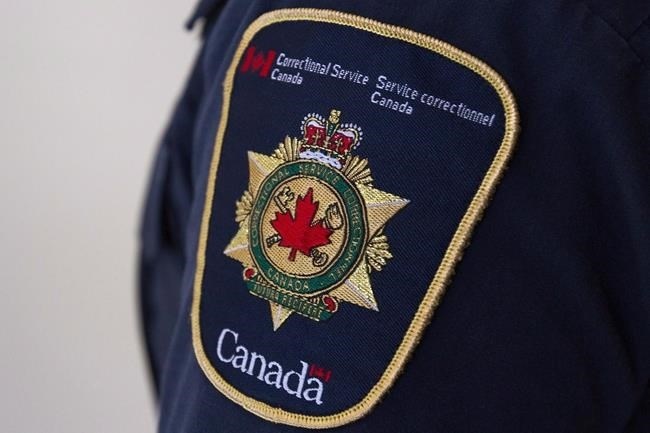
A shoulder patch on a correctional officer is shown at the Collins Bay Institution in Kingston, Ont., on Tuesday, May 10, 2016. Changes to the way the federal prison system treats transgender prisoners mean offenders will now be placed in a men's or women's facility, based on how they self-identify.
Image Credit: THE CANADIAN PRESS/Lars Hagberg
February 01, 2018 - 6:00 AM
OTTAWA - The federal prison system is changing the way it treats transgender inmates, who will now be placed in a men's or women's facility based on how they self-identify.
Correctional staff must also address transgender inmates by their preferred name and pronoun and offenders will be allowed to shop for both men's or women's items from the correctional service's approved catalogue, regardless of their anatomy or the gender on their identification documents.
These changes come after the federal government added "gender identity and expression" to the list of prohibited grounds for discrimination in the Canadian Human Rights Act last June.
"We are overjoyed that (Correctional Service Canada) is making so many positive changes that recognize the human rights of trans people in the correctional system," said Jennifer Metcalfe, executive director of Prisoners' Legal Services.
"These changes will improve the safety and dignity of transgender federal offenders in Canada, affecting every aspect of their daily lives."
Helen Kennedy, executive director of advocacy group Egale Canada, called the reforms a step in the right direction but warned that correctional staff are not properly equipped to accommodate transgender prisoners.
"Unless it's implemented with the training that's required for all of those frontline workers, then we could potentially be putting people in harm's way," she said.
Jeremy Dias of the Canadian Centre for Gender and Sexual Diversity applauded the government for following through on its earlier commitments but he said he too would like to see more done to keep transgender prisoners safe.
"This is only halfway there," he said. "In 2018, we have to start thinking of trans and non-binary specific correctional facilities."
While more needs to be done, it is worth celebrating the progress made in advocating for the rights of transgender people in general in recent history, Dias said.
"There was a time not so long ago where we didn't think that these sorts of policies and initiatives were even possible."
A joint statement from Prisoners' Legal Services, the Correctional Service of Canada and the Canadian Human Rights Commission said the reforms are the result of years of collaboration.
The head of the human rights commission, Marie-Claude Landry, said the reforms are about respect and human dignity, which every person is entitled to, including those in the prison system.
The changes also emphasize the privacy and confidentiality of an inmate's gender identity, which will be shared only if relevant and only with those directly involved in a prisoner's care.
Individualized protocols will also be offered to transgender inmates, which include accommodations when accessing shower and toilet facilities and the choice of male or female officers to conduct frisk and strip searches, urine testing and camera surveillance.
CSC commissioner Don Head said the service is committed to building a safe, inclusive and respectful environment for everyone, including transgender staff, offenders, volunteers and visitors.
News from © The Canadian Press, 2018